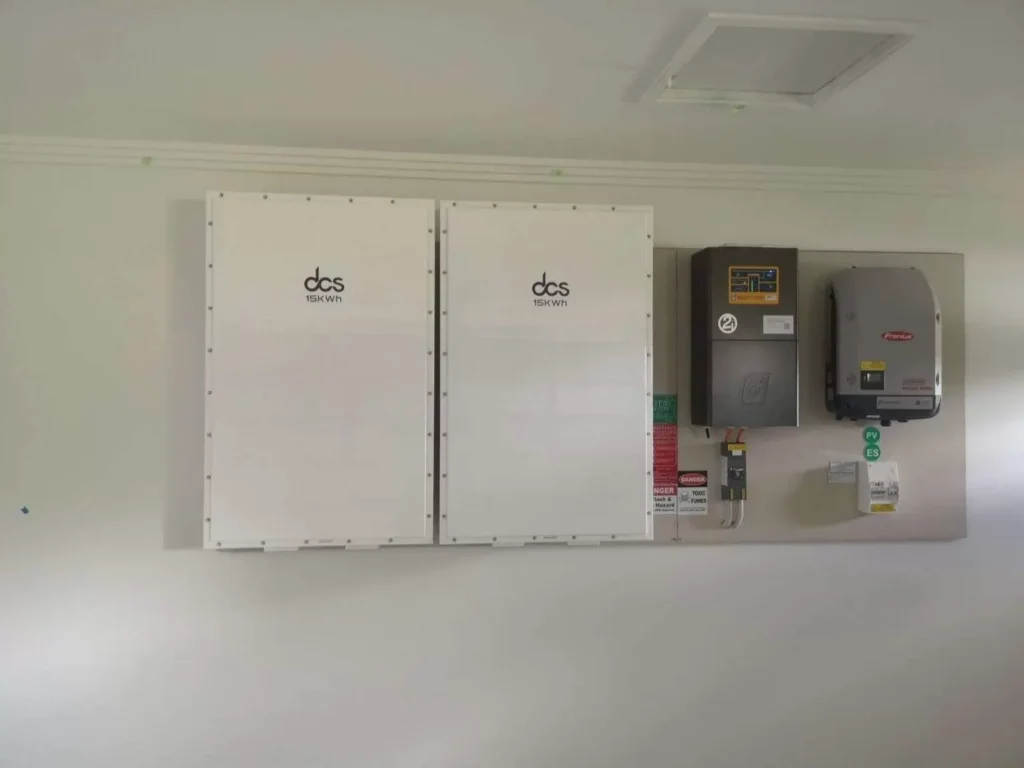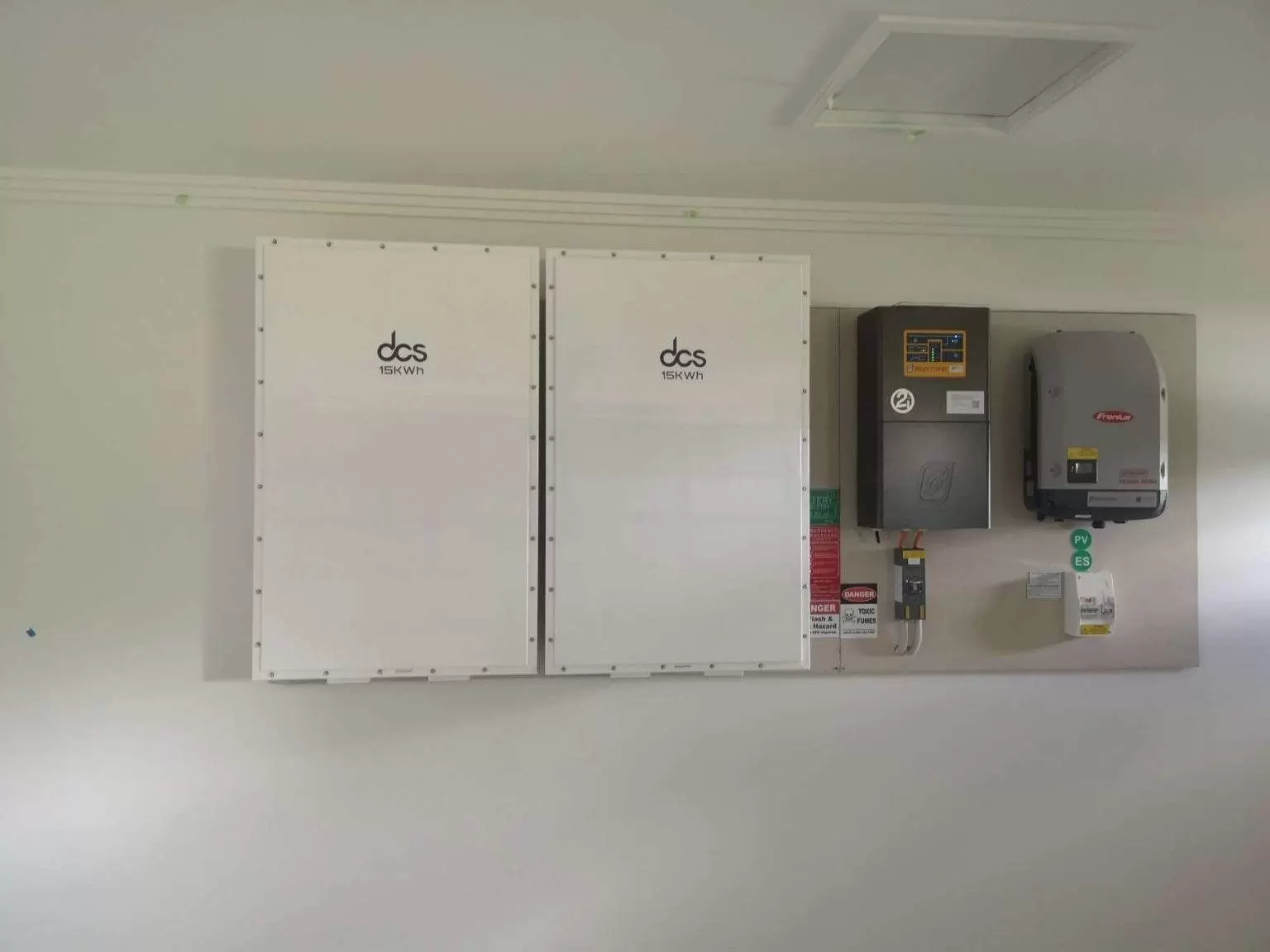The Lithium Ion Battery Pack has become popular for many applications due to its numerous benefits. This innovative technology has revolutionized how we power our devices and vehicles, from high energy density to fast charging capabilities. Equally important is the contribution of Lithium-Ion Battery Packs to the overall efficiency of solar power systems. Their superior energy density and charge retention capabilities minimize energy loss, ensuring that a greater proportion of the solar energy collected is available for use.
The Importance of Lithium Solar Battery
The transition to a Lithium Solar Battery represents a significant leap forward in effectively harnessing solar energy. These batteries are key to addressing the variability of solar power, as they offer superior storage solutions that can efficiently capture excess energy during peak sunlight hours and make it available during periods of low sunlight or high demand. Lithium batteries play a crucial role in solar energy systems by serving as an efficient and reliable energy storage solution.
 Here are several reasons highlighting their importance:
Here are several reasons highlighting their importance:
- Energy Storage: Solar energy production is intermittent, depending on weather and time of day. Lithium batteries store excess solar energy generated during peak production periods for use during low or no sunlight. It ensures a continuous and reliable power supply, reducing reliance on the grid and increasing energy independence.
- Grid Independence: Lithium batteries enable off-grid or grid-tied solar systems to operate independently from the utility grid. It is particularly beneficial in remote areas with limited or unreliable grid access. With energy stored in lithium batteries, users can access electricity even when the grid is down or unavailable.
- Load Shifting: The solar batteries allow for load shifting, where excess solar energy generated during the day can be stored during peak demand periods or at night. It helps optimize energy usage, reduce electricity costs, and alleviate strain on the grid during peak hours.
- Backup Power: In a grid outage or emergency, solar batteries provide backup power to critical loads such as lighting, refrigeration, medical devices, and communication systems. It enhances resilience and ensures the continuity of essential services during disruptions.
High Energy Density: The Core Advantage
At the heart of the Lithium-Ion Battery Pack’s appeal is its remarkable energy density, which sets it apart from alternative energy storage solutions. This characteristic enables these batteries to store substantial energy relative to their size and weight. This high energy density facilitates their extensive use in applications where space and weight are at a premium, such as in electric vehicles and portable electronic devices.
The implications of having a high energy density are multifaceted. For electric vehicles, it translates to longer distances covered on a single charge, effectively addressing range anxiety among users. In the realm of portable electronics, it means that devices can operate longer without the need for frequent recharging, enhancing user convenience and efficiency.
Moreover, the compact size and lightweight nature of high energy density make Lithium-Ion Battery Packs integral in developing sleek, modern devices that demand minimalism without compromising performance. This advantage is not limited to consumer electronics and electric vehicles but extends to various sectors, including aerospace, where the balance between power and weight is crucial.
Longevity and Reliability of Lithium-Ion Packs
Lithium-ion battery Packs distinguish themselves through their impressive lifespan and unwavering reliability, outshining traditional battery technologies like lead-acid. These batteries are engineered to endure a higher number of charge-discharge cycles before exhibiting any significant degradation in performance. Lithium-ion battery packs are known for their longevity and reliability, especially compared to traditional battery chemistries like lead-acid.
Here are several factors contributing to the longevity and reliability of lithium-ion packs:
- Cycle Life: Lithium-ion packs typically have a high cycle life, meaning they can undergo many charge and discharge cycles before experiencing significant degradation. Advanced lithium-ion chemistries and cell designs allow thousands of cycles, depending on the specific battery chemistry and operating conditions.
- Depth of Discharge (DoD): Lithium-ion packs can often tolerate deeper discharges than other battery chemistries without adversely affecting their lifespan. Keeping the depth of discharge within recommended limits can help maximize the longevity of the battery pack.
- Stable Voltage Output: Lithium-ion packs maintain a relatively stable voltage output throughout the discharge cycle, delivering consistent power to connected devices or systems. This voltage stability contributes to reliable performance and ensures compatibility with various applications.
- Low Self-Discharge Rate: Lithium-ion packs have a low self-discharge rate, meaning they can retain stored energy for extended periods without significant loss. This feature reduces the need for frequent recharging and ensures that the battery pack remains ready even after prolonged storage periods.
Fast Charging Capabilities
Lithium-ion battery Packs stand out in energy storage for their exceptional capacity for rapid charging. This distinct characteristic sets them apart from conventional battery technologies, which often require longer periods to reach full charge. The efficiency with which these batteries can absorb and store energy in a reduced timeframe significantly enhances the convenience and usability of various devices and electric vehicles.
For users, this means less downtime waiting for devices to charge and more time engaging with them productively or enjoying their functionality. In the context of electric vehicles, the rapid charging capability of Lithium-Ion Battery Packs reduces the duration of charging stops, making long-distance travel more feasible and convenient for traditional fuel-based cars.
This attribute is not just about user convenience; it also indicates the advanced chemistry and engineering underpinning Lithium-Ion technology. The ability to support fast charging without compromising the battery’s lifespan or performance is a testament to these power sources’ sophisticated design and innovation.
The Impact of Switching to Lithium Solar Batteries
Switching to lithium solar batteries heralds a transformative shift in utilising renewable energy sources, particularly solar power. This shift is marked by an enhanced ability to manage energy storage more efficiently, translating to increased energy security and resilience in renewable energy infrastructures.
The adoption of Solar Batteries significantly mitigates the challenges associated with the intermittent nature of solar power by ensuring a stable and consistent energy supply even during periods without sunlight. This transition not only supports a reduction in carbon footprint by relying on cleaner energy but also empowers homeowners and businesses to achieve higher energy independence.
By optimizing energy consumption and reducing reliance on the grid, users can experience lower energy bills and contribute to a decrease in the overall demand for traditional energy sources. Furthermore, integrating Solar Batteries into solar energy systems paves the way for smarter, more connected energy networks that can dynamically respond to energy supply and demand changes, facilitating a more sustainable and efficient approach to energy management.
Safety Features and Innovations
Safety is a critical aspect of lithium battery design and operation, and numerous features and innovations have been developed to enhance the safety of lithium batteries.
Here are some key safety features and innovations:
- Battery Management System (BMS): A BMS is an electronic system that monitors and manages the performance of individual cells within a lithium battery pack. It regulates charging and discharging currents, prevents overcharging and over-discharging, balances cell voltages, and protects against short circuits and thermal runaway events.
- Thermal Management Systems: Thermal management systems help regulate the temperature of lithium batteries to prevent overheating and thermal runaway. These systems may include temperature sensors, heat sinks, cooling fans, and thermal insulation materials to dissipate excess heat and maintain optimal operating temperatures.
- Cell Design: Advances in cell design focus on improving the structural integrity and safety of lithium batteries. Features such as reinforced cell casings, internal pressure relief mechanisms, and flame-retardant electrolytes help prevent physical damage, punctures, and leakage that could lead to thermal runaway.
- Separator Materials: Innovations in separator materials aim to enhance the safety and performance of lithium batteries. Nanotechnology-based separators with improved thermal stability, mechanical strength, and puncture resistance help prevent internal short circuits and reduce the risk of thermal runaway.
Overall, safety features and innovations in lithium battery technology continue to evolve, driven by advancements in materials, design, manufacturing processes, and testing methodologies. These advancements aim to mitigate risks associated with lithium batteries and promote their safe and responsible use across various applications.
The Future of Lithium-Ion Technology
The horizon for lithium-ion battery pack technology is vibrant and has potential, driven by ongoing research and innovations to enhance its capabilities further. Efforts are being concentrated on achieving higher energy densities, enabling these batteries to store even more power without increasing size. This development is crucial for applications like electric vehicles, where extended range on a single charge is a coveted feature, and consumer electronics, where the demand for longer usage times continues growing.
Another focus area is the reduction of charging times while preserving battery life. Innovations in fast-charging technology promise to make recharging even quicker and more efficient, paralleling the convenience offered by traditional fueling methods. This advancement could significantly boost the adoption rates of electric vehicles and encourage more widespread use of portable electronic devices. Indeed, faster charging times and longer battery life could also facilitate the evolution of emerging technologies, such as drones and robotic equipment, that rely heavily on robust and efficient energy solutions.
FAQS
Q: What Safety Measures Are In Place For Lithium-Ion Battery Packs?
A: Lithium-ion battery Packs are equipped with various safety measures, including advanced Battery Management Systems (BMS) that monitor and regulate their operation. These systems ensure the batteries operate within safe temperature and voltage ranges and help prevent overcharging, thermal runaway, and cell degradation.
Q: How Can The Lifespan Of A Lithium Ion Battery Pack Be Maximized?
A: To maximize the lifespan of a Lithium-Ion Battery Pack, it’s important to follow proper charging practices, avoid exposing the battery to extreme temperatures, and use the battery regularly. Adhering to the manufacturer’s guidelines for use and storage also plays a crucial role in prolonging battery life.
Q: Is It Possible To Extend The Use Of Lithium-Ion Battery Packs Beyond Their Typical Lifespan?
A: While Lithium-Ion Battery Packs have a finite lifespan, proper maintenance and usage can help extend their functionality. Once their performance degrades, they can often still be used in less demanding applications before recycling.
Conclusion
A Lithium Ion Battery Pack has undeniably transformed the landscape of energy storage and power generation across many sectors. Their unparalleled combination of high energy density, longevity, rapid charging, and environmental benefits distinguishes them as a pivotal innovation in modern technology. As we advance, the ongoing developments in this domain signal a future where these batteries will become even more integral to our daily lives and the broader goal of achieving a sustainable energy ecosystem.
| Other Good Articles to Read |
| Skank Blogs |
| Unreal Blogs |
| Tba Blogs |
| All City Forums |
| Dany Blogs |
| Refuge Blogs |
| The Music Blogs |
| Key Forums |
| The Big Blog Theory |
| Joe Blogs |
| Blogs 4 Me |
| Blogs Emon |
| Related Business Listings |
| Contact Directory |
| Local Business Profiles |



